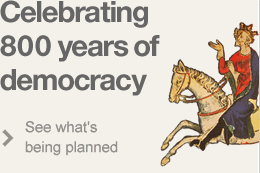William de Forz (1191×6-1241), holder of the Norman title of count of Aumale, was a mercurial personality whose apparent self-interestedness and frequent changes of allegiance raise questions, difficult to answer, about the balance of personal ambition and concern for the common good in the motivation of the medieval aristocracy.
Forz was the son of the wealthy Aumale heiress, Countess Hawise, a much married lady, by her third husband, the Poitevin naval commander, William de Forz, who died in 1195. He came to England, probably from Poitou, in 1214, and in September or October of that year secured possession of the English lands of his mother’s inheritance on the condition that he married Aveline, daughter of Richard de Montfichet. In this way he was brought into contact with another lord to be chosen one of the Twenty-Five. William’s English lands consisted principally of the honours of Holderness and Skipton in Yorkshire, Cockermouth in Cumberland, and lands in Lincolnshire around Barrow-on-Humber in the north and Castle Bytham in the south.
In the spring of 1215, perhaps as a result of his links with Mountfitchet, he joined the baronial opposition to King John and after the meeting at Runnymede was nominated to the Twenty Five. By August, however, he had changed sides, returning to the king’s allegiance, and he accompanied John on his punitive expedition to the north of England in December. He deserted John a second time in June 1216 but had returned to royal service by the autumn, after Henry III’s accession, and attested the reissue of Magna Carta in November.
In the course of the civil war from 1215 William acquired many lands, some of which belonged to the Crown, which the Minority Government was keen to recover from him. He surrendered most of these properties in or before May 1220, but clung onto Castle Bytham in Lincolnshire, to which his family had an ancestral claim. At the end of 1220, apparently annoyed at being passed over for the appointment of seneschal of Poitou and Gascony, he rebelled against the Minority Government, suddenly left court to garrison Bytham, and then, faced with the ravaging of his lands, fled to the north of England, where he took refuge at Fountains. The Government treated him remarkably leniently, and he and his men were pardoned.
In his later years Forz was employed on a range of diplomatic and military business for the king, treating with the Holy Roman Emperor at Antwerp in 1227 and accompanying Henry III on his expedition to Poitou in 1230. In the spring of 1241 he set out for Jerusalem, but died on the way. His wife, Aveline, was buried at Thornton Abbey, but his own burial place is unknown.
At the village of Castle Bytham, north of Stamford, the enormous earthworks of the castle still tower over the streets to recall the most turbulent episode of this man’s enigmatic career.
By Professor Nigel Saul, Royal Holloway, University of London.
Featured Article
Today is the very anniversary of the sealing of the Magna Carta, that great charter which laid down the basis for English common law, now spread throughout the world. Magna Carta gave protection of law against despotism by...
Read on...Recent Articles
- Magna Carta's American Adventure
- 800th anniversary of Bristol...
- Bristol 800 concert and...
- Emancipation and Magna Carta
- Terrorism and Tolerance -...
- Magna Carta
- Magna Carta Benches mark...
- ABA Magna Carta Memorial...
Stay updated
If you would like to keep informed about the work of the Magna Carta Trust and our partners, please sign up to the newsletter below.
Become a Supporter
There are a number of significant supporter opportunities. Register your interest early to ensure the widest range of options.
Find out more




